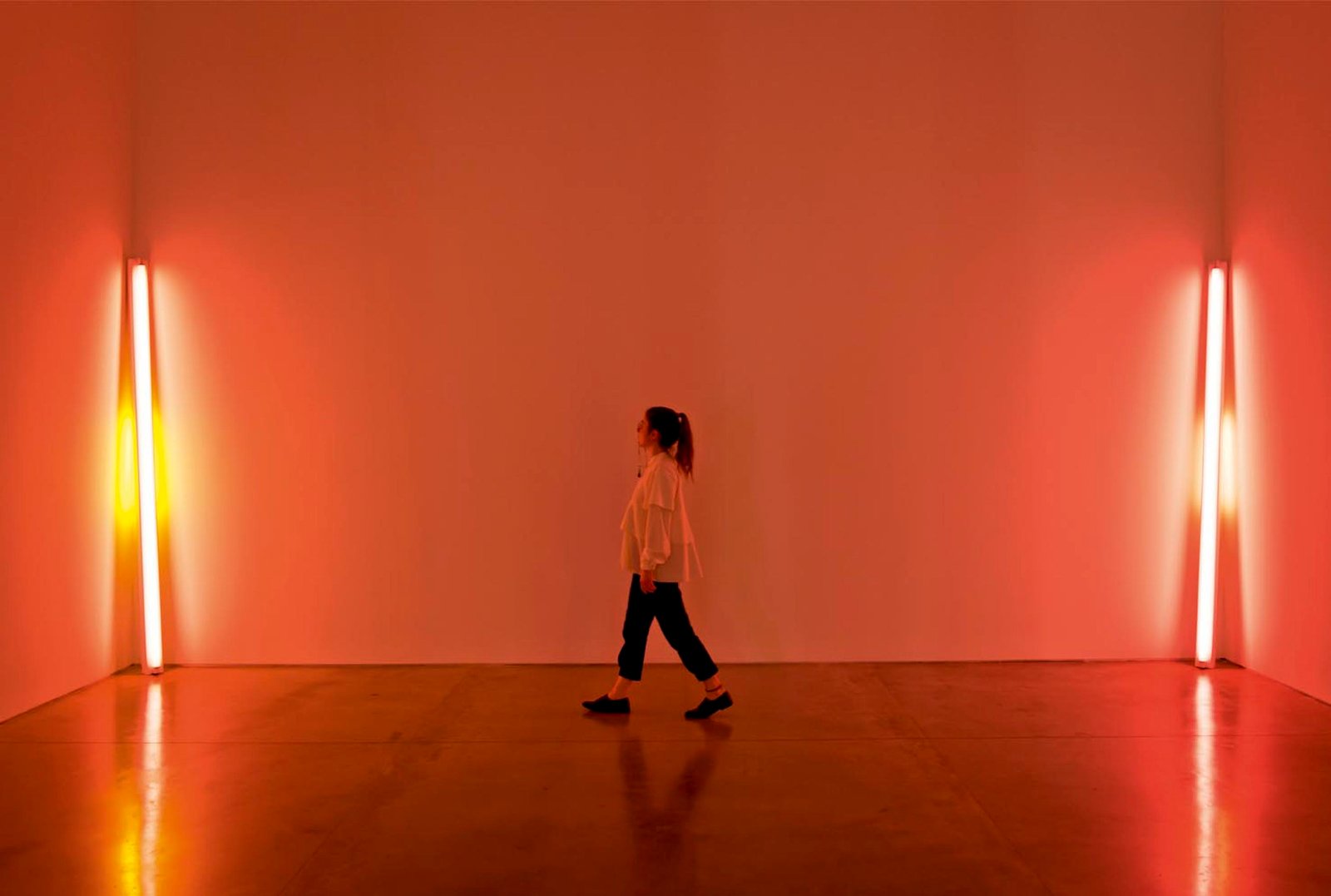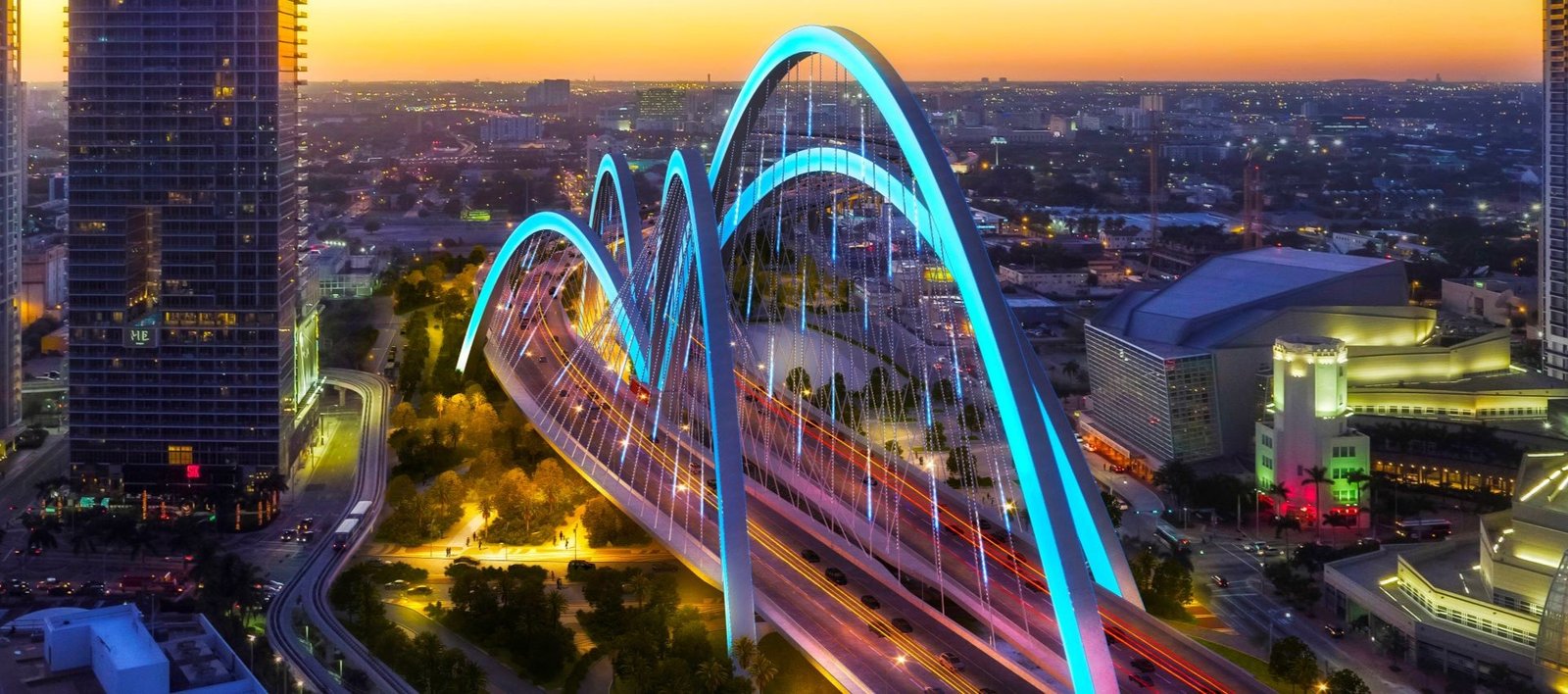
Neón Architecture
Sin título (a Christina y Bruno). 1966-1971. Daytime fluorescent light. 243,8 x 243,8 x 12,7 cm. Dia Art Foundation. Sin título (a Barbara y Joost). 1966-1971.Daytime fluorescent light. 243,8 x 243,8 x 12,7 cm. Dia Art Foundation.
By: Sol Astrid Giraldo E.
Photos: Courtesy Museo de Arte Moderno de Medellín
Until the mid-20th century, people entered museums and galleries only to look at paintings hanging on the walls or sculptures standing on the floor. Contact with art was passive, vertical, and visual. Viewers consumed with their eyes —silent and still— beautiful artifacts made from exquisite materials using refined techniques. Then, at the end of the explosive 1960s, New Yorker Dan Flavin (1933-1996), armed with little more than a few fragile, inexpensive neon tubes, destabilized centuries of history.
He waged his battle not with armed troops, but using a subtle stripped-down strategy: “less is more” was the minimalist creed of this artist and his generation. Suddenly, solidity disappeared into thin air and museums emptied out. The works no longer mattered; it was the intangible space between them that remained. A neutral and transparent limbo, invisible, yet providing support for everything around it. And Flavin lit up this space. His actions were perhaps distantly related to the Gothic cathedrals, which centuries ago paid tribute to the light by filtering it through stained glass windows, embracing space, sculpting and worshiping it within walls of stone.
 Sin título. 1969. Fluorescent light and metal. 243,8 x 10,2 x 25,4 cm. Dia Art Foundation; donación de Louise y Leonard Riggio, 2005.
Sin título. 1969. Fluorescent light and metal. 243,8 x 10,2 x 25,4 cm. Dia Art Foundation; donación de Louise y Leonard Riggio, 2005.
Flavin, a contemporary priest of the new cult, opened a vein of light inside the profane cathedrals that are our modern museums. A product of his time, an urban animal, a link in the consumer chain, and a user of technology, he pursued not the universal and transcendental divine light of medieval times, but 20th-century light: precarious, cheap, and industrial, contained within mass-produced neon tubes. Flavin’s work changed the artistic equation entirely and art, on his terms, became an active, immersive experience, challenging not just our eyes but also our entire body and all its senses. It was no longer a question of replicating the outside world using oils or marble, instead, art created an inner world, beyond images and forms.
There was no longer any need to build symbols or decipher them; the time had come to navigate freely through a sea of perceptions, sensations, and emotions. Light could produce new spatial dimensions, expand them, make them infinite and playful. Flavin’s subversive proposal made him a contemporary classic and one of the pioneers of the environments and installations that began travelling the world.
For nearly sixty years, his work has toured international circuits, all of which owe a debt of gratitude to his rebellions and transgressions. Flavin’s iconic lamps have now arrived at the Museum of Modern Art of Medellín for the museum’s “Space and Light” exhibition (open until October).
 Sin título. 1969.Fluorescent light and metal. 243,8 x 10,2 x 25,4 cm. Dia Art Foundation; donación de Louise y Leonard Riggio, 2005.
Sin título. 1969.Fluorescent light and metal. 243,8 x 10,2 x 25,4 cm. Dia Art Foundation; donación de Louise y Leonard Riggio, 2005.
Few guest artists would seem so welcome in an enclosure like this, once a foundry, whose main attribute is space. Thanks to its industrial origins, the MAMM currently boasts what is perhaps the nation’s largest museum structure.
One of the artist’s famous “barriers,” made in 1973, is currently on display in the belly of this industrial fossil. Very much in the minimalist spirit that nurtured Flavin’s work, the piece is composed of a long series of modular lamps spanning the museum’s central hall. They mark out the area and make it visible, drawing it into the foreground and adding new depth and complexity. All this under an imposing roof tinted with diffuse violet tones, like the afterglow of an urban sunset.Inside the museum’s galleries are more of his emblematic installations, including “European Couples,” created from 1966-1971.
 El tres nominal (a Guillermo de Ockham). 1963. Fluorescent light and metal. . 243.8 x 10.2 x 12.7 cm; 243.8 x 20.3 x 12.7 cm; 243.8 x 30.5 x 12.7 cm . Dia Art Foundation; Donación parcial, Lannan Foundation, 2013.
El tres nominal (a Guillermo de Ockham). 1963. Fluorescent light and metal. . 243.8 x 10.2 x 12.7 cm; 243.8 x 20.3 x 12.7 cm; 243.8 x 30.5 x 12.7 cm . Dia Art Foundation; Donación parcial, Lannan Foundation, 2013.
Each of these “couples” consists of fluorescent tubes arranged vertically and horizontally, like squares. Some of the lights face the viewer, while others blur against the supporting walls, softening the building’s angles and loosening its rigidity. These edges, however, frame space, not paintings: a moment of silence, a square vacuum, to counter the visual and auditory contamination and hyper-excitement of modern life.
Flavin’s works take the form of the space where they are installed, adapting to its restrictions, bringing flow to its rigidity, questioning its lines and perspectives. Architecture is no longer a backdrop for what the viewer is seeing; it is there to be seen, enjoyed, and explored. The Flavin exhibition at the MAMM has made us newly aware of the museum and presented us with a stripped-down, profane, and urban cult masterfully officiated by the great contemporary priest that is light.
 Sin título. 1969.Fluorescent light and metal. 243,8 x 10,2 x 25,4 cm. Dia Art Foundation; donación de Louise y Leonard Riggio, 2005.
Sin título. 1969.Fluorescent light and metal. 243,8 x 10,2 x 25,4 cm. Dia Art Foundation; donación de Louise y Leonard Riggio, 2005. El tres nominal (a Guillermo de Ockham). 1963. Fluorescent light and metal. . 243.8 x 10.2 x 12.7 cm; 243.8 x 20.3 x 12.7 cm; 243.8 x 30.5 x 12.7 cm . Dia Art Foundation; Donación parcial, Lannan Foundation, 2013.
El tres nominal (a Guillermo de Ockham). 1963. Fluorescent light and metal. . 243.8 x 10.2 x 12.7 cm; 243.8 x 20.3 x 12.7 cm; 243.8 x 30.5 x 12.7 cm . Dia Art Foundation; Donación parcial, Lannan Foundation, 2013.


